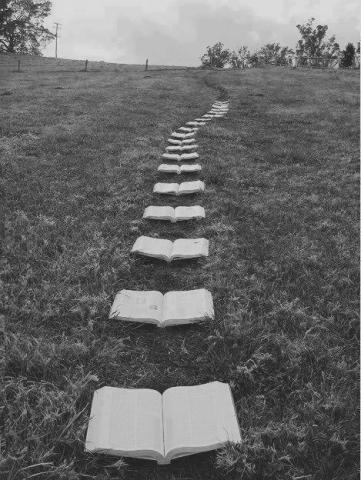I have a habit of writing late at night. I set up a chair at my kitchen window, prop my laptop on the sill, and gaze out at the 2 a.m. Nashville pastoral. It’s the same view every night. There’s the quiet calm of the empty bank parking lot, the dimmed lights of the closed Walgreens, and the distant glow of the McDonald’s yellow, curving M.
Tonight was no different. I set my computer on the sill and began to write a post about climate change and the environment in contemporary literature. The day had been unusually temperate—70 in the middle of January—and I opened the window to take in the night air. The breeze was stronger than usual (the windows shivered in their frames) but the night was lovely.
Not an hour later, I received a text from a friend: “Look outside if you haven’t. It’s about to be stormy.” Within twenty minutes, the wind had kicked up and the lanky street lamp outside my apartment began to sway. Twenty more minutes, and the wind was twisting great sheets of rain around the buildings. Tornado sirens spiraled out over the city. I sat at my window, baffled.
Is this normal weather? What is normal weather? With so many mega-storms affecting the U.S. in the past few years—from Sandy to Katrina to the Nashville’s great flood in 2010—it makes sense to look out the window and think, sure, the wind is dying down and the storm is passing over, but what about next month, or next week?
This Monday, I spoke with Professor Teresa Goddu, who co-directs the The Cumberland Project, a faculty initiative to incorporate sustainability topics in Vanderbilt’s curriculum. Professor Goddu, an American Studies and English professor, currently teaches a class that explores “ecotopia as a conceptual model.”
As I wrote in my previous post, I’m a fledgling convert to the climate crisis movement. I didn’t know where to begin. What did climate change literature look like? More importantly, if the author consciously wrote climate crisis advocacy fiction, could it really be considered art, or was it instead literary propaganda?
Professor Goddu said, “We need to address your use of the term “advocacy.” Literature that addresses climate change is not necessarily advocacy literature. Authors write about crucial issues. Whether they’re advocating or not is something different. Tony Morrison often talks about how, as an author, she lays bare crucial issues in her work, but she has no duty to come up with the answers to solve them.”
Ah, that made sense. Climate change literature, like all great literature, should be written as an attempt to describe and understand the world and the human condition. As the Greek philosopher and writer Nikos Kazantzakis put it, “The real meaning of enlightenment” (for our purposes, literature) “is to gaze with undimmed eyes on all darkness.”
To gaze with undimmed eyes at darkness suits enlightenment and literary understanding. Ideally, however, climate change literature will also galvanize readers into action.
Professor Goddu added, “The question is whether to cater to hope or to fear. The question is how to tell this story so that people will actually listen. Something I ask my students to consider in class is dystopian literature. Is it useful to us? Is the despair that dystopian literature creates helpful? I’m trying to bring in ecotopian literature that works the muscle of creative thinking and open us up to new possibilities.”
Nicole Burdakin, a Vanderbilt senior in the English Honors Program with a double major in Geology, is currently writing a novella for her Honors thesis. The novella focuses on the research efforts of a paleozoologist who also works as a consultant for a polar bear exhibit in a California zoo. Climate change is a peripheral theme throughout the novella.
I asked Nicole why she chose climate change as a theme for her novel.
Burdakin explained, “Climate change and literary fiction work together in that the climate is a metaphor for a lot of character struggles and character development issues. The idea of impending change, the idea of something being irreversible and out of your control—there are a lot of good metaphorical parallels between what’s happening in the climate and what’s happening with the characters.”
Looking back over some of my own work, I see that I’ve subconsciously used consequences of the climate crisis (the worst drought Texas had seen in 70 years, for example) as metaphors for my characters’ personal struggles.
Literature does help us understand the world. Climate crisis literature achieves the same goals, but it highlights different problems.
Yes, climate change serves as a metaphor for the characters’ struggles and fears, but what’s terrifying is that the climate crisis in reality is not a metaphorical parallel for our problems. It is our greatest problem, one that cannot be pushed back behind our periphery vision for much longer.
Climate change is the fitful baby we hope will quiet down if we let it be. The problem with a whimpering baby, though, is nine times out of ten, the baby doesn’t quiet down. The baby only screams louder.
Though the tornado sirens have quieted for now, they still echo in my head. When is the next time they’ll ring again?
![]()


